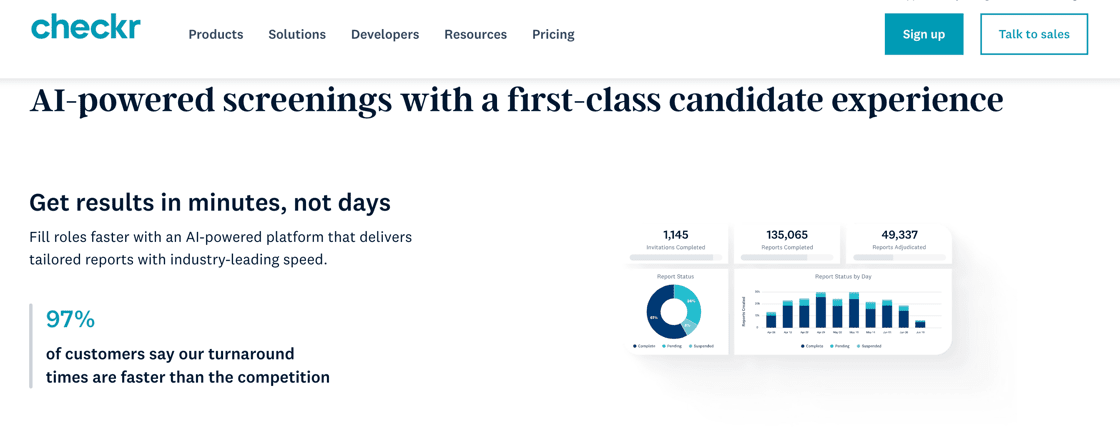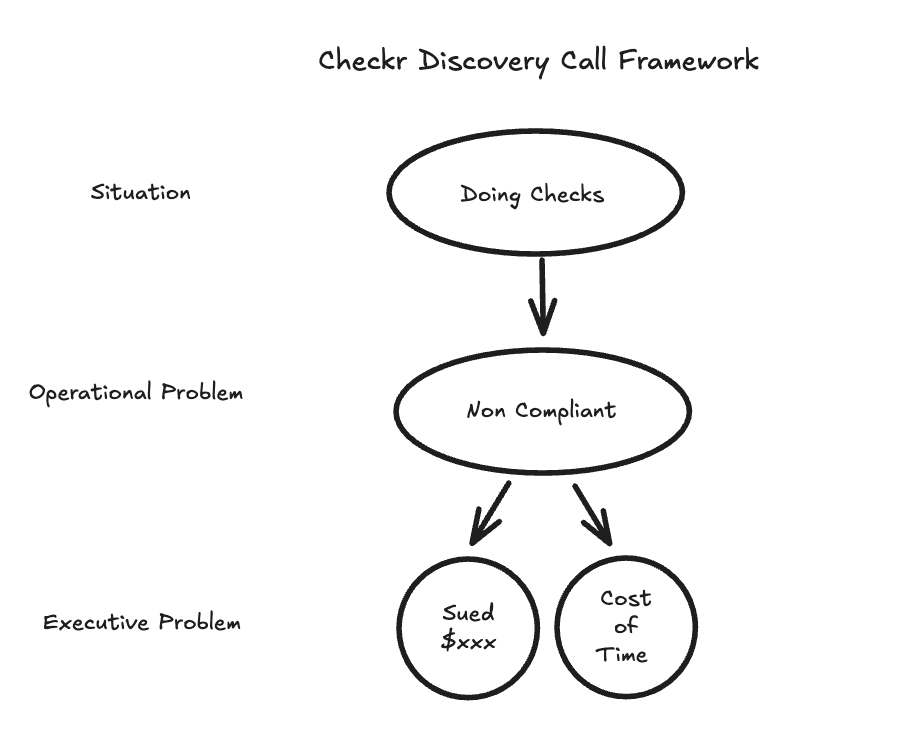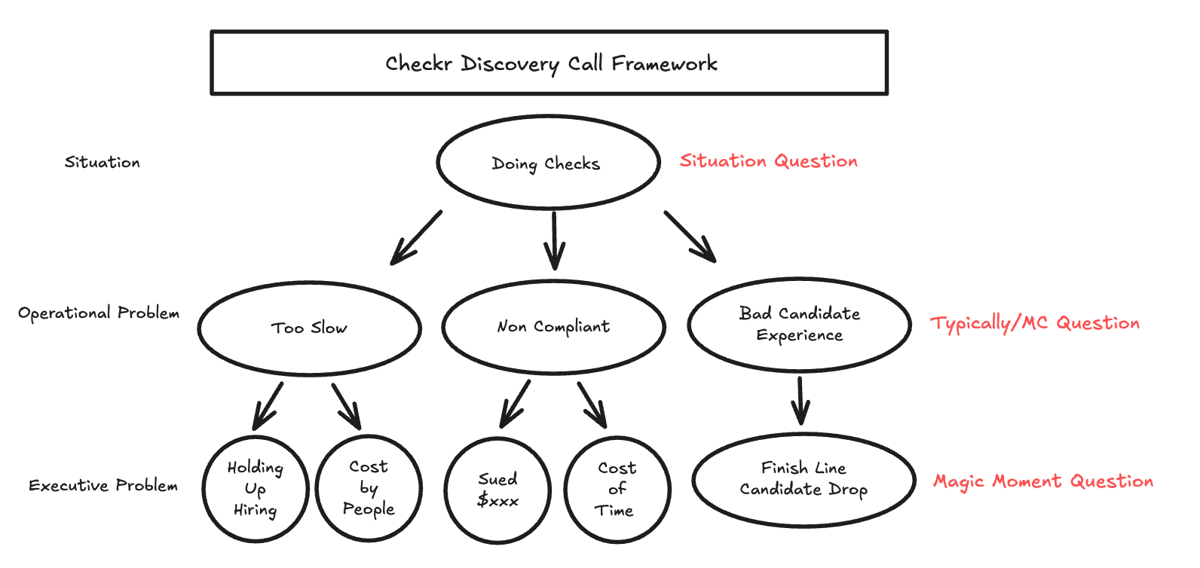
Ever hopped on a discovery call for a product you barely know and felt your brain reaching for the “perfect” question? That’s backwards. The top reps don’t start with questions—they start with the problems they’re trying to uncover.
Today we’re pressure-testing a fresh space (using Checkr as the stand-in) and walking you through a simple 3-step framework to run crisp discovery even when you’re new: define the problems, build a discovery tree, then navigate it top-to-bottom like a pro.
Here’s how the three pieces click, and why this outperforms every single-channel play.
SPONSORED BY SELECTSOFTWARE
Tailored HR Software Recommendations for Your Organization
Choosing HR software can be overwhelming—with over 1,000+ tools on the market, it’s easy to spend days and still feel unsure.
That’s why thousands of HR teams rely on SSR’s HR software advisors. Instead of spending hundreds of hours on research and demos, you’ll get free 1:1 help from an HR software expert who understands your requirements and provides 2–3 tailored recommendations based on your unique needs.
Whether you're looking for an HRIS, ATS, or Payroll solution, we help you cut through the noise and make confident decisions—fast.
Why HR teams trust SSR HR Advisors:
✅ 100% free for HR teams
✅ Get 2-3 Tailored solutions from 1,000+ options
✅ 1:1 expert guidance from HR advisors
✅ Trusted by 15,000+ companies
From MIT to the Indianapolis Colts, smart HR teams trust SSR to find the right software—without the stress.
SALES
3-step framework you can steal to sell anything
Ever run a discovery call for a product you’ve never sold before?
I’m taking on that challenge in today’s Noozy.
I’ll be using Checkr as an example — they’re a software company that helps businesses run background checks.

I don’t know a thing about them, but I’ll show you my 3-step discovery framework you can steal to crush your next disco:
Understand the problems your product solves
Build your discovery tree
Navigate the discovery tree from top to bottom
1. Understand the Problems Your Product Solves
Here’s the #1 reason most reps finish discovery calls without uncovering a single meaningful challenge:
They obsess over asking the “perfect discovery question” instead of understanding the problem they’re trying to uncover first.
You can use the “perfect” canned discovery question, but if you point it at the wrong problem it doesn’t matter.
The easiest way to figure out the problem you solve is to invert the feature-benefit on your website:
Checkr’s website references 3 feature-benefits on the left, see how we turned it into problems on the right:

Now we need to figure out how to turn these into bigger problems in discovery.

2. Build Your Discovery Call Tree
In order to build a discovery call tree, it’s important to first understand the 3 levels of discovery:
Situation: These have nothing to do with the problem, it’s simply how they do the thing today.
Operational Problem: This is the day to day problem that is a pain for your champion.
Executive Problem: This is the business impact (lost revenue, churned employees, risk). Once you have all three uncovered for your product, you can build out the full discovery tree.
Watch how the “Non-Compliant” background check problem gets even bigger:
Situation: They’re probably… doing background checks?
Operational Problem: Non-compliantly (maybe because of state-specific regulations)
Executive Program: Well, you could kinda get sued! Or you might have an HR person spending eons running separate background checks for every state!
You’ll see the fully fleshed out tree below.
Now it’s time to use questions to navigate the tree.

Let’s continue that same example and play this out in a discovery call:
Uncover Situations with “Why’d You Take The Call”:
"My guess is you don’t take calls with everyone who reaches out. What prompted you to take this one today?"
(let’s say they give us a fuzzy answer like “our background check process isn’t scalable”)*
Uncover Operational Problems with Multiple-Choice Questions:
“Typically when teams run into issues with background checks, it’s one of three things: 1) The process is way too slow or manual, 2) They’re worried about compliance risk, or 3) The candidate experience is just horrendous. Which of the three is it for you?”
(they cite hiring remote workers where every state has a different background check)
Uncover Executive Problems with Magic Moment Questions (these always get you emotional stories):
"My guess is you didn’t just wake up yesterday and realize we can’t do background checks in a compliant way. I’m curious, when did you actually realize this was a problem?
Was something missed in a previous background check, was someone non compliant, or is this just something you need to do in order to prevent that stuff?"
9/10 times, they’ll drop into a long story about a non-compliant background check that created some legal risk. That’s your exec problem.
And that’s a wrap, folks!
H/T Armand Farrokh from 30MPC for this amazing content
HEADLINES
Hot picks from the web
→ The execution crisis: Why GTM needs a system that actually works
SOFTWARE
Tool of the day
✅ TxLabz: Hire dev team to build your idea into fully-functional MVP in under 90 days and under $30K
That’s all for today.
Until next time,
Team B2B Whales
P.S. If you’re serious about scaling, join our Whales Club - our premium B2B community with weekly expert sessions, deal feedback, and the resources we actually use to close. Membership starts at $100/month only - cancel anytime.

